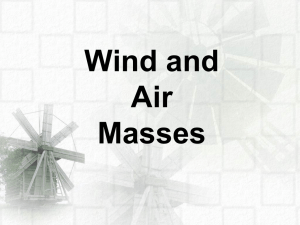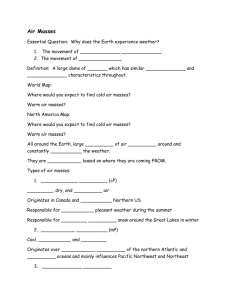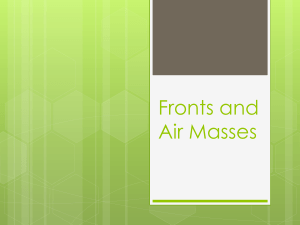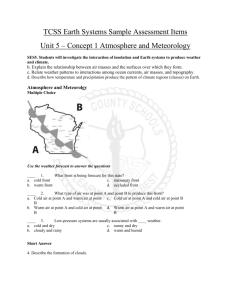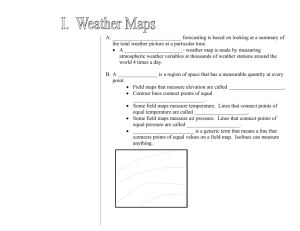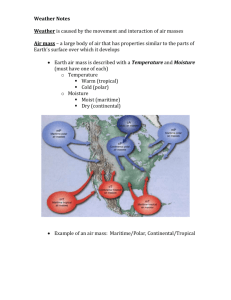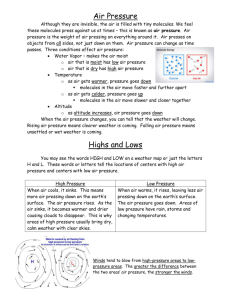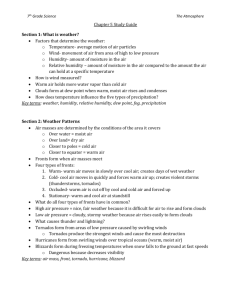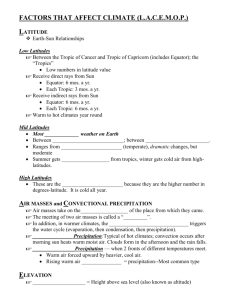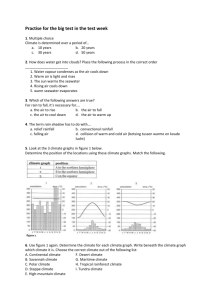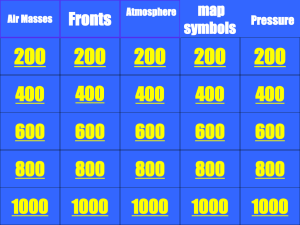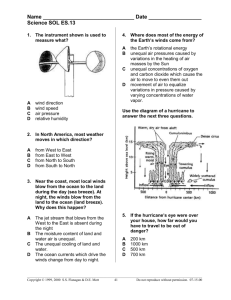Weather and Climate, Oct 29
advertisement
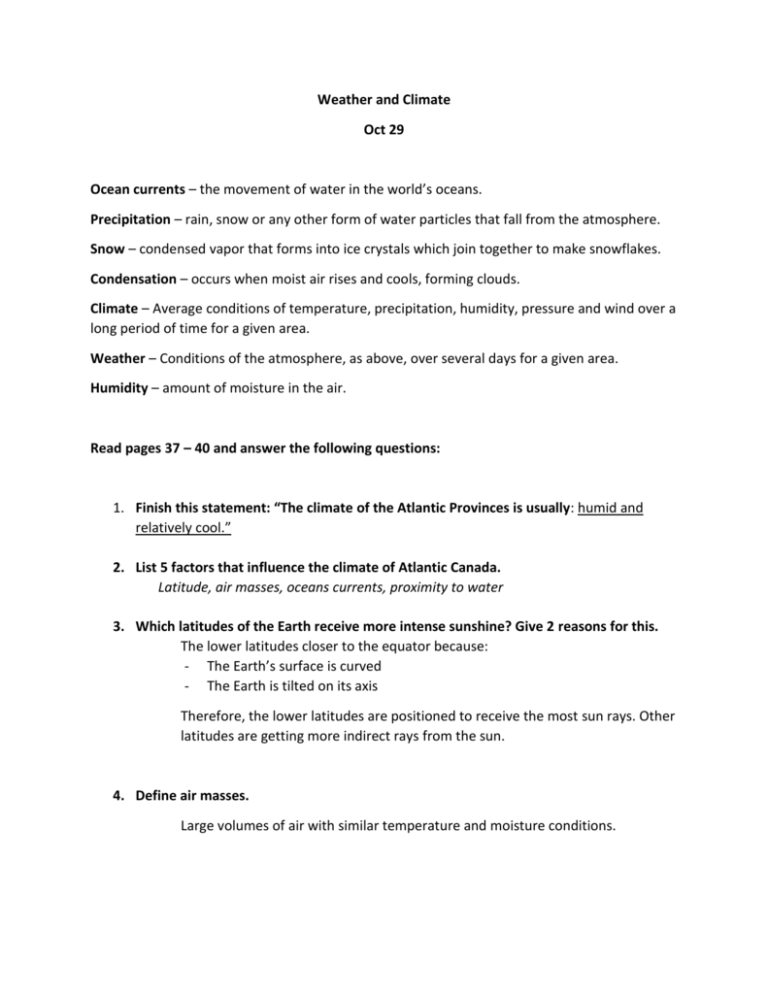
Weather and Climate Oct 29 Ocean currents – the movement of water in the world’s oceans. Precipitation – rain, snow or any other form of water particles that fall from the atmosphere. Snow – condensed vapor that forms into ice crystals which join together to make snowflakes. Condensation – occurs when moist air rises and cools, forming clouds. Climate – Average conditions of temperature, precipitation, humidity, pressure and wind over a long period of time for a given area. Weather – Conditions of the atmosphere, as above, over several days for a given area. Humidity – amount of moisture in the air. Read pages 37 – 40 and answer the following questions: 1. Finish this statement: “The climate of the Atlantic Provinces is usually: humid and relatively cool.” 2. List 5 factors that influence the climate of Atlantic Canada. Latitude, air masses, oceans currents, proximity to water 3. Which latitudes of the Earth receive more intense sunshine? Give 2 reasons for this. The lower latitudes closer to the equator because: - The Earth’s surface is curved - The Earth is tilted on its axis Therefore, the lower latitudes are positioned to receive the most sun rays. Other latitudes are getting more indirect rays from the sun. 4. Define air masses. Large volumes of air with similar temperature and moisture conditions. 5. What is wind? Movement of air within these masses. 6. State where each air mass originates and its effect on how the air feels. Continental Arctic Air: rolls in from Northern Canada and feels cold and dry Maritime Tropical Air: rolls in from the Caribbean and feels warm and moist. Maritime Polar Air: blows in from the Atlantic east of NFLD and it feels cool and moist 7. What is a front? The leading edge of an air mass. Fronts move in to an area and often bring sudden changes in weather. Ex: cold front, warm front 8. What causes most of the precipitation in the Atlantic Provinces? When cold and dry air masses from the north meet the warm and moist air masses from the south. 9. Explain where each current originates and tell what effect each has on the area: Gulf Stream: from the south, brings warm water to the southeastern Atlantic Provinces and warms and moistens the air. Labrador Current: from the north brings cold waters that cool and moisten the air. 10. Explain what fog is. Warm moist air is cooled and condenses into very small water droplets and remain suspended in slow moving air. 11. Describe the moderate effect that proximity (closeness) to water has on communities close to the ocean. Water heats up and cools down more slowly than land. Places close to large bodies of water stay cooler in summer because the water and the air above it is still cool from the winter. In the fall and winter, the water retains the heat of the summer longer and keeps winters relatively warm. 12. What is the effect of elevation on temperatures? The higher the elevation, the lower the temperature, because as the air rises it loses pressure, expands, molecules are moving farther apart and the air loses energy. Energy creates heat. Less energy, less heat.
